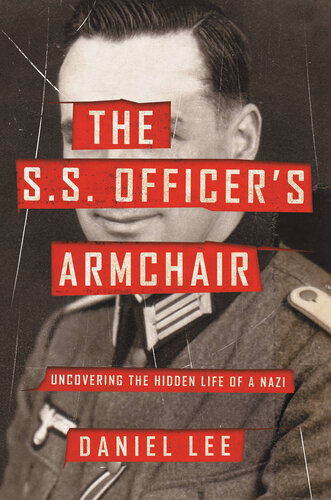
The S.S. Officer's Armchair
Uncovering the Hidden Life of a Nazi
کتاب های مرتبط
- اطلاعات
- نقد و بررسی
- دیدگاه کاربران
نقد و بررسی

April 15, 2020
A midlevel Nazi bureaucrat comes to life thanks to an unexpected discovery. In 2011, a woman took an old armchair for reupholstering, and she discovered that, sewn inside a cushion, was a bundle of Nazi-era documents from a lawyer named Robert Griesinger. British historian Lee determined to learn more, and the result is a fascinating true-life detective story, as the author engagingly chronicles his searches in archives and interviews with elderly survivors. Five years of research revealed that Griesinger was born in 1906 in a family wealthy enough to escape most of the privations of World War I. Along with many Germans of his age, Griesinger hated the Treaty of Versailles and, like his family, was politically conservative. He attended university, where he acquired a circle of like-minded, fiercely nationalistic friends. Without distinguishing himself, he chose a career in the law and joined the Ministry of Interior in 1933 under new chancellor Adolf Hitler. This ministry dealt with the police, so Griesinger worked with the Gestapo, a group he eventually joined. Although working in buildings where vicious interrogation and torture took place, his duties were administrative; Lee turns up no evidence that he participated or that he disapproved. Called up in 1939, he served until wounded in 1941 and then returned to civilian duties, acquiring a plum position in Prague in 1943. Even as the Red Army approached, officials stayed on the job, so Griesinger was caught in the May 5, 1945 Czech uprising, which inflicted brutal revenge on the remaining Germans. He died in September, possibly of disease. Perhaps because few personal writings survive, Griesinger's character remains a mystery, but Lee succeeds in documenting the life of a Nazi civil servant who, like many in his generation, showed little interest in Hitler before he took power or objection to him afterward. An illuminating biography and more evidence for the "banality of evil." (b/w photos, maps)
COPYRIGHT(2020) Kirkus Reviews, ALL RIGHTS RESERVED.

April 27, 2020
Historian Lee (Pétain’s Jewish Children) reconstructs the life of a lower-level SS officer in this richly detailed and eloquent account. Asked by an acquaintance to examine a cache of documents discovered in the cushion of an armchair her mother had taken in to be reupholstered, Lee linked the papers to Robert Griesinger, a Gestapo lawyer in Stuttgart. Lee tracks down Griesinger’s surviving daughters; reviews his SS file; and traces his family roots to America. One of the “countless enablers who kept the government running, filed the paperwork and lived side-by-side with potential victims of the regime,” Griesinger was the grandson of German-American slave owners in Louisiana. Despite an undistinguished academic career, he landed a job with the Ministry of the Interior after passing his law exams in 1933, joined the SS, and went on to serve in an army unit that executed Jews in the Soviet Union (though there is no evidence he directly participated in the murders). Lee compares 20th-century America’s anti-miscegenation laws to Nazi racial classifications, and offers numerous prosaic details drawn from the documents, including Griesinger’s difficulties in getting official approval to marry a divorced woman. Lee’s granular focus reveals the mechanisms by which ordinary Germans were drawn into horrific crimes. Even those well-versed in the history of the Holocaust will learn something new.

June 1, 2020
In 2011, Lee (history, Queen Mary, Univ. of London; Petain's Jewish Children) attended a dinner party in Florence, Italy, where another guest told him of a discovery made by her mother in Amsterdam. While reupholstering an old armchair, the restorer uncovered a packet of Nazi documents sewn into the seat cushion. This sparked Lee's search for information about the documents' original owner: Stuttgart lawyer Robert Griesinger, who worked for the Schutzstaffel (SS) from 1936 to 1945. What follows is a searching assessment of the beliefs, actions, and support network of a midlevel Nazi administrator. Yet just as interesting is the detailed account of how Lee tracked down information about this elusive figure. What Lee uncovered, with extraordinary persistence, helps us understand life within the administrative side of Nazi Germany, a topic little explored because of gaps in historical records; the SS destroyed most of its files in the final days of the war. Readers follow the author as he engages on this detective story, ultimately meeting with Griesinger's descendants, who realize how little they knew about their ancestor. VERDICT Readers of World War II literature and the history of the Nazi regime should find this a fascinating read.--David Keymer, Cleveland
Copyright 2020 Library Journal, LLC Used with permission.

























دیدگاه کاربران